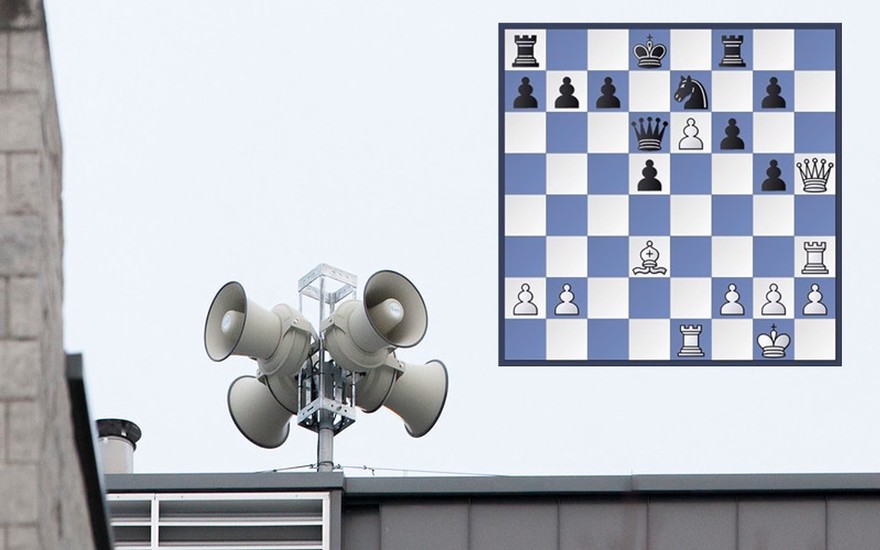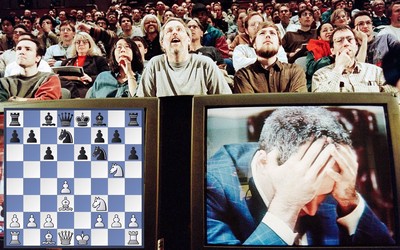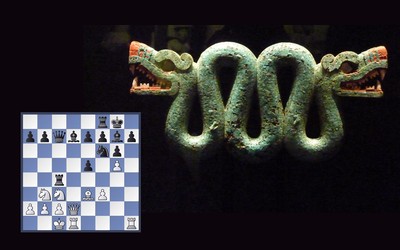
Queen's University's Flickr photostream (Creative Commons)
Anything but quiet
I'm reflecting on some the most memorable, interesting and entertaining games that I've played in over 25 years at the board. I hope you will enjoy them.Game 2
D.Shapland – S.Nicholson
Training Game
Sheffield
15th July 1996
Giuoco Piano: Möller Attack
When you’re learning the game of chess it can be helpful to have another student alongside you who's at the same stage of development as you. It means you’ll always have a sparring partner and you can share, and bounce ideas off one another. When I learnt to play chess (relatively late in life at 17) I was very fortunate to fall in love with the game at the same time as several school friends and, in our rivalry, we drove each other on to study and improve. In fact, during the course of one summer vacation, four of us held a quadruple-round robin which really sharpened our competitive instincts.
When you are learning in this kind of environment there are two objectives the attainment of which provide enormous satisfaction. The first is to beat your coach and the second (rather easier in the early stages of your development) is to beat your training partner. It was several years before I beat my coach, but I did have a series of entertaining training games with my good friend Simon Nicholson. This game was one of the later encounters in the course of a long and tumultuous rivalry at the board. It still makes me particularly happy when I play through this game because I’m very satisfied with the quality of my play.
The platform for the game was a Giuoco Piano (which is Italian for ‘Quiet Game’). The line played (with 5.d4) is certainly not a trendy line at any level of the game right now, but it’s historically very rich and very, very sharp. Anything but “quiet” in fact. Simon had introduced the opening into his repertoire with White a little while before this game and had studied the opening carefully. He’d chosen to look into the Rossolimo Variation which begins with 7.Bd2. I’d also cooked the books but had elected to play the most critical and concrete line with 7.Nc3 and later 9.d5, the Möller Attack.
When we sat down to play this game, I was immediately surprised to find Simon (a die-hard Scandinavian player) essay 1...e5 and immediately realised that he’d prepared for a theoretical discussion in the Giuoco Piano. The game developed very sharply, and Simon indeed proved that he had prepared extensively for this game. Unfortunately, he hadn’t prepared quite as extensively as I had!
The title image for this post shows a position from the critical juncture of the game for you to consider. It’s White to play his twenty first move. The position looks appetising for him. The Black king has been forced to d8 making it very tricky for him to complete his development and connect his rooks. The passed White e-pawn is a huge thorn in Black’s flesh. However, Black is a pawn up and his defences look very difficult to breach. The knight is a very effective blockader and stands guard over several key entry squares. Moreover, White must be quick because if Black is given time to play c6-Kc7 then he will be able to consolidate, complete his development and potentially, go on the counter-attack. What is White’s plan and how should he proceed?
Now let’s see the whole game from the start before you get the solution.
More blog posts by inter_mezzo

Kasparov's ruin
I'm reflecting on some the most memorable, interesting and entertaining games that I've played in ov…
Two-headed dragon
I'm reflecting on some the most memorable, interesting and entertaining games that I've played in ov…